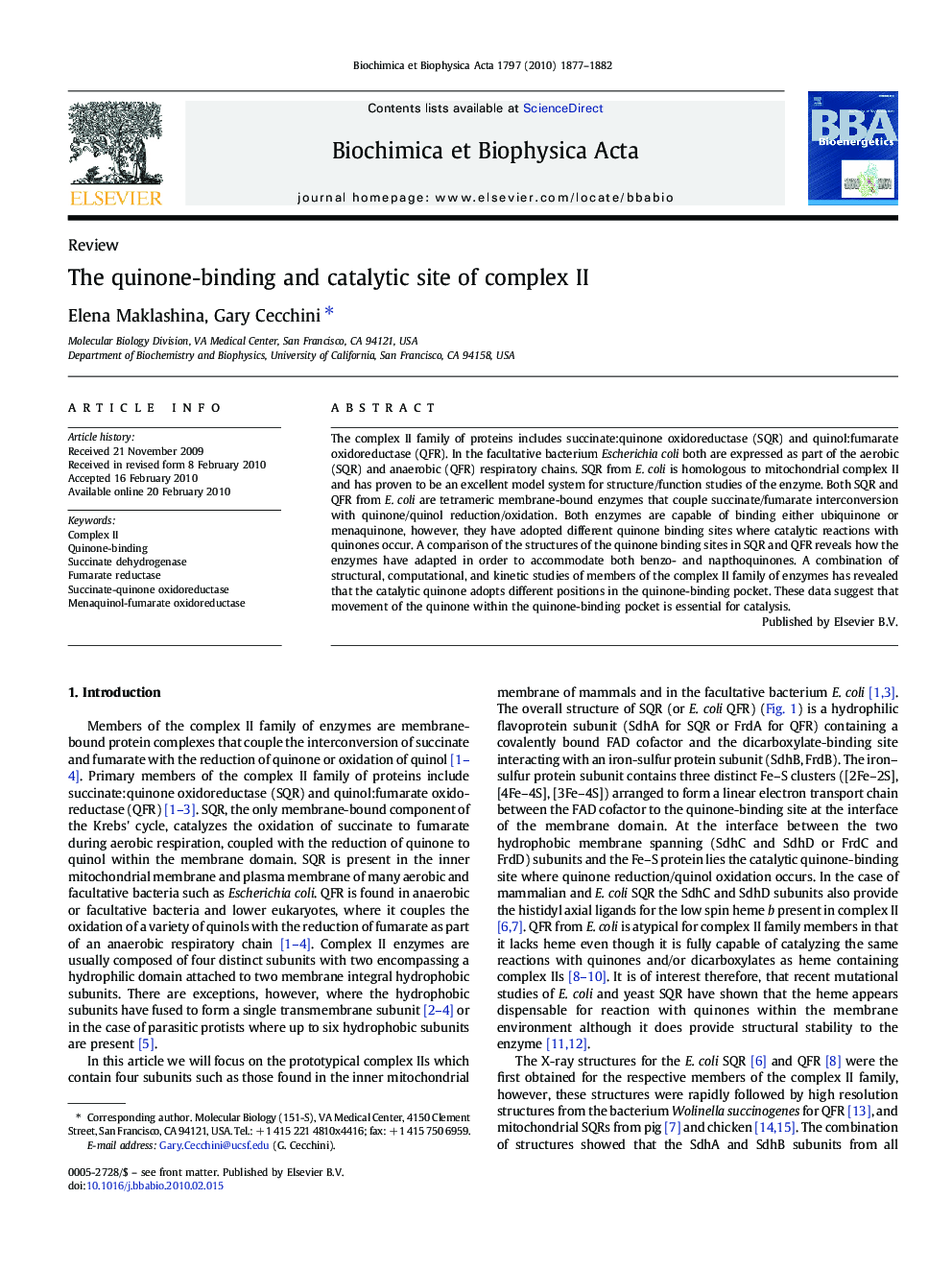| Article ID | Journal | Published Year | Pages | File Type |
|---|---|---|---|---|
| 1942860 | Biochimica et Biophysica Acta (BBA) - Bioenergetics | 2010 | 6 Pages |
The complex II family of proteins includes succinate:quinone oxidoreductase (SQR) and quinol:fumarate oxidoreductase (QFR). In the facultative bacterium Escherichia coli both are expressed as part of the aerobic (SQR) and anaerobic (QFR) respiratory chains. SQR from E. coli is homologous to mitochondrial complex II and has proven to be an excellent model system for structure/function studies of the enzyme. Both SQR and QFR from E. coli are tetrameric membrane-bound enzymes that couple succinate/fumarate interconversion with quinone/quinol reduction/oxidation. Both enzymes are capable of binding either ubiquinone or menaquinone, however, they have adopted different quinone binding sites where catalytic reactions with quinones occur. A comparison of the structures of the quinone binding sites in SQR and QFR reveals how the enzymes have adapted in order to accommodate both benzo- and napthoquinones. A combination of structural, computational, and kinetic studies of members of the complex II family of enzymes has revealed that the catalytic quinone adopts different positions in the quinone-binding pocket. These data suggest that movement of the quinone within the quinone-binding pocket is essential for catalysis.
